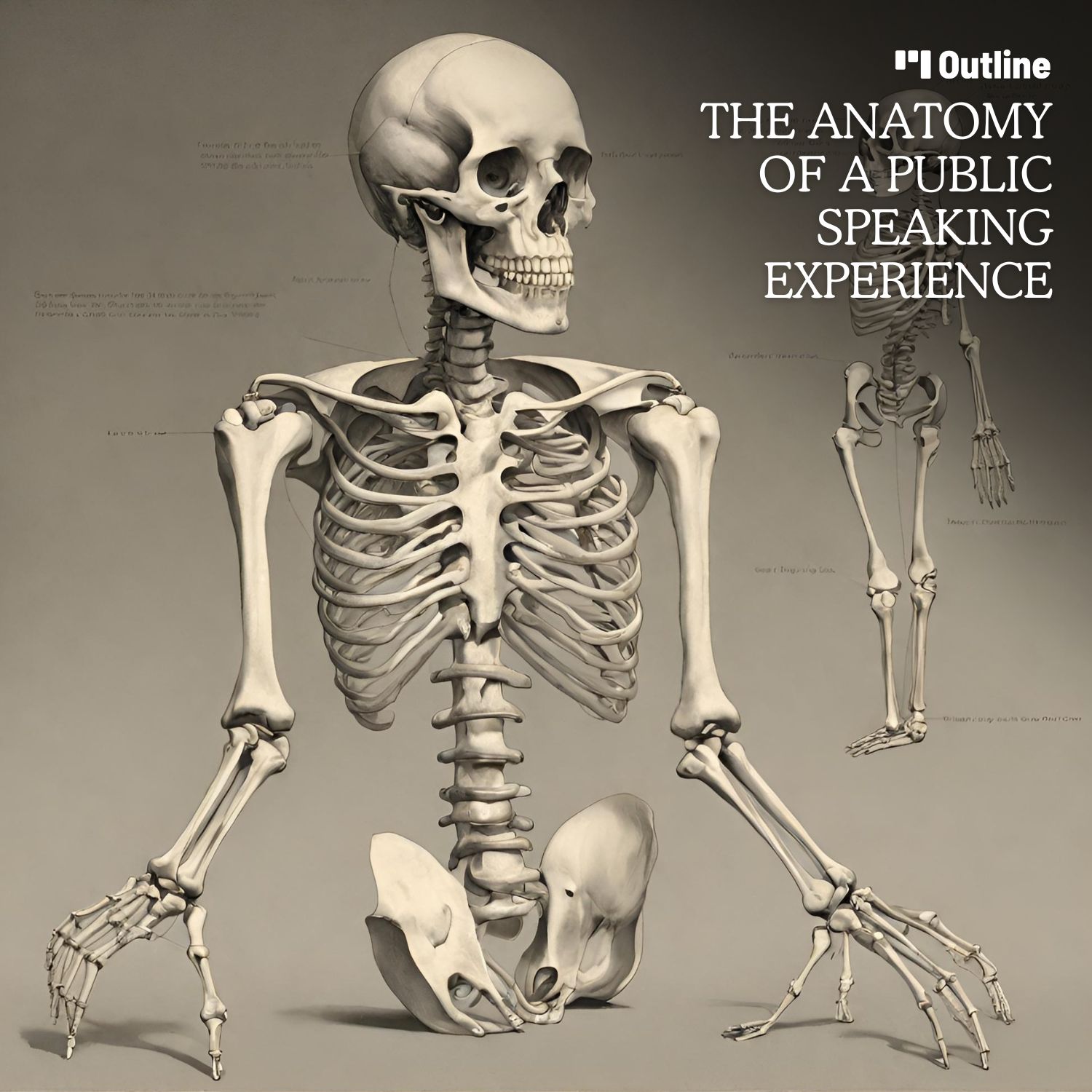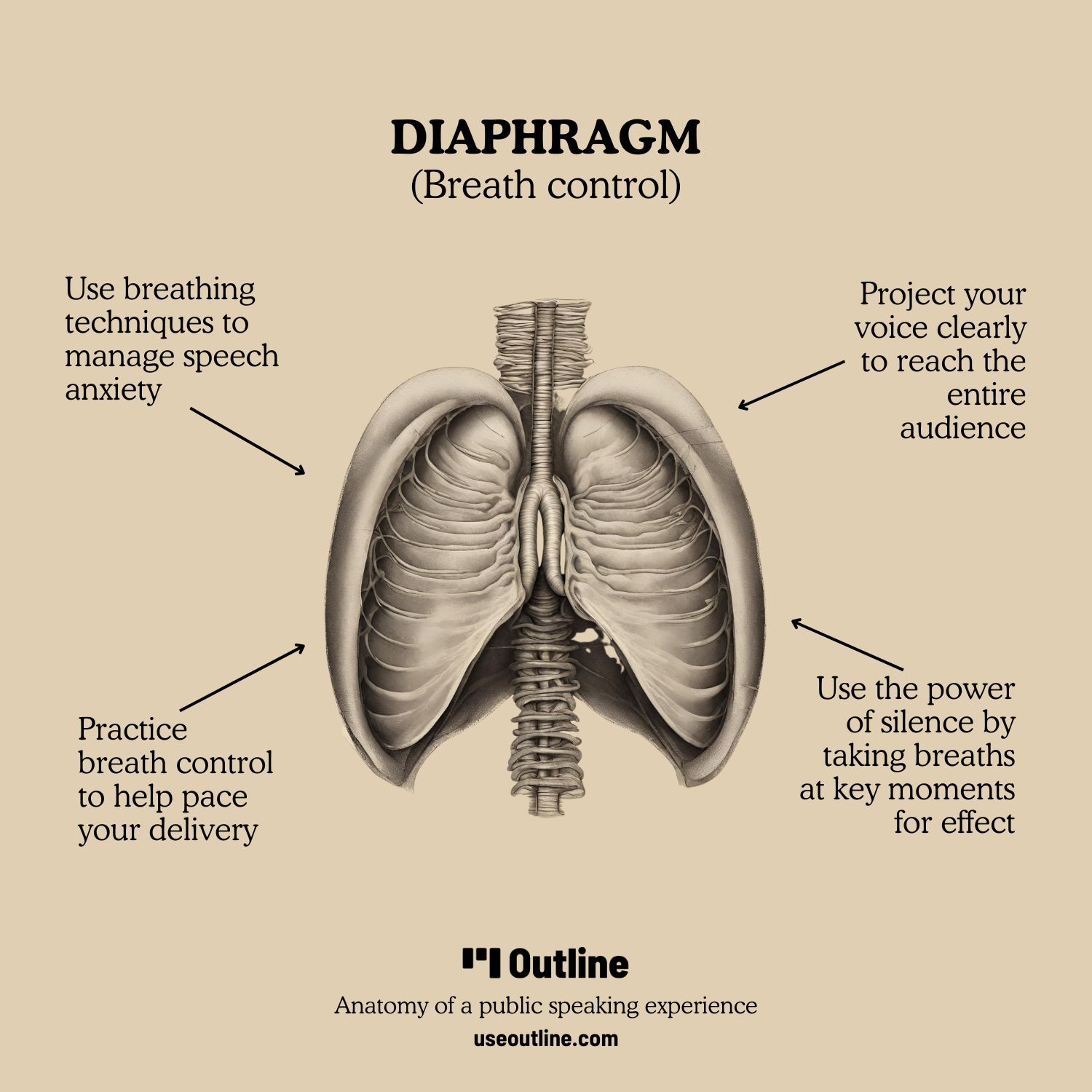It's time for a little anatomy lesson.
Just as the human body relies on the harmonious functioning of its parts, a successful public speaking presentation depends on the coordination of various anatomical elements.
Let's start with the brain...
Download the full PDF of this post

Part 1 - The Brain (Strategic Planning)
The brain is the command center for strategic planning in public speaking, essential for crafting a message that resonates.
It's where audience analysis and message development coalesce, enabling you to create a speech tailored to audience needs while aligning with your objectives.
A speaker must engage in rigorous content research to ensure the information is accurate and relevant, ensuring the speech is not only informative but also transformative.
Through strategic planning, we set the stage for a presentation that can educate, inspire, and motivate, ultimately leading to a more profound and impactful experience for the audience.

Part 2 - Eyes (Observation & Connection)
Eyes are not just windows to the soul, but also to the hearts of your audience.
Observation helps a speaker become a responsive communicator, adapting to the real-time feedback seen in the audience's non-verbal cues.
Making meaningful eye contact establishes a personal connection. Even in a virtual presentation where you're forced to believe that someone is looking back at you. Eye contact creates a sense of engagement that transcends the physical space between speaker and listener.
This connection is further enhanced by effectively utilizing visual aids and maintaining awareness of the audience’s reactions, allowing for a dynamic and interactive performance.

Part 3 - Ears (Active Listening)
Active listening involves tuning into both the audience's verbal and non-verbal feedback.
Being receptive allows for an agile and responsive dialogue, where you can adjust the talk’s flow to match the audience’s mood and comprehension levels.
By listening attentively, you can create a conversational tone and an inclusive atmosphere where the audience feels heard and valued, turning what is often a one-way monologue into more of an interactive exchange.

Part 4 - Mouth (Verbal Communication)
The mouth articulates the vision and thoughts conceived by the mind, transforming them into spoken words that inform, persuade, and delight.
Clear articulation ensures that your message is delivered with clarity, and modulation of tone (think of this as audio contrast) adds variety, and keeps the audience engaged.
This is particularly effective in a virtual event situation, where changes in volume, pacing, and tonality can draw listeners back to the screen to become active viewers.
Rhetorical devices and storytelling can simplify complex concepts and weave a narrative that resonates with the audience's own experiences.

Part 5 - Diaphragm (Breath Control)
The diaphragm acts as the powerhouse for speech delivery, providing the breath control necessary for a steady and impactful voice.
Learning to control your breathing helps to maintain a calm demeanour, and allows you to adjust the pacing in your speech to create emphasis on key points.
The strategic use of silent pauses (which are scary to do, but hugely effective), can heighten audience anticipation and underscore significant moments, making the experience more dynamic and memorable.

Part 6 - Arms & Hands (Gestures)
Our arms and hands bring colour to our speech. Illustrating points with physical gestures can make abstract ideas tangible.
When synchronized with verbal cues, gestures can dramatically enhance the clarity and impact of your message.
But they should be purposeful, complementing your content, and scaled to suit the audience and setting. If you're in a small room, you don't need big gestures to get your point across. But in an auditorium with 5,000 people, the bigger the better.
Effective use of gestures can transform a static presentation into a visually engaging narrative.

Part 7 - Legs & Feet (Posture and Movement)
The foundation of a speaker's presence lies in their posture and movement.
Our feet ground us, creating physical stability that translates into a perception of confidence and authority.
Equally, mindful movement around the stage can help maintain interest and ensure that all sections of the audience feel part of the experience. What you don't want to do—particularly in a big room—is spend all of your time on one side of the stage, effectively ignoring the other half.
Thoughtful navigation of your space can make the difference between a static lecture and a dynamic presentation.

Part 8 - The Heart (Emotional Connection)
The heart is where our emotion lives, and in public speaking, it is the source of our passion and authenticity.
Enhance this by sharing personal stories and displaying genuine feelings, if you want to forge a strong bond with the audience.
Speakers who speak from the heart can transcend the transactional nature of the average talk, creating an emotive experience that aligns the audience with the speaker's passion, turning information into inspiration.

Part 9 - The Spine (Confidence & Structure)
The spine represents the backbone of any speech: both structurally and in terms of the speaker’s confidence.
A well-structured talk provides a clear path for the audience to follow, and a confident stance exudes authority and trustworthiness.
Using segues to transition between points can make your presentation’s architecture stronger, guiding the audience through a logical progression of ideas.
While an upright posture reflects and reinforces the internal confidence needed to deliver a powerful message (and to even get on stage in the first place).

How to use experiences in Outline
Outline has a very unique feature called "Audience Experiences" that let you define what you're trying to achieve and emote.
You label your slides with the desired experience, which helps manifest them by adding another layer of context and meaning to your structure and flow.
They serve as an important reminder when practicing, to shift gears into different modes that will help create a dynamic performance, vs. a static an monotone delivery.

If you make presentations, then you should use Outline.

